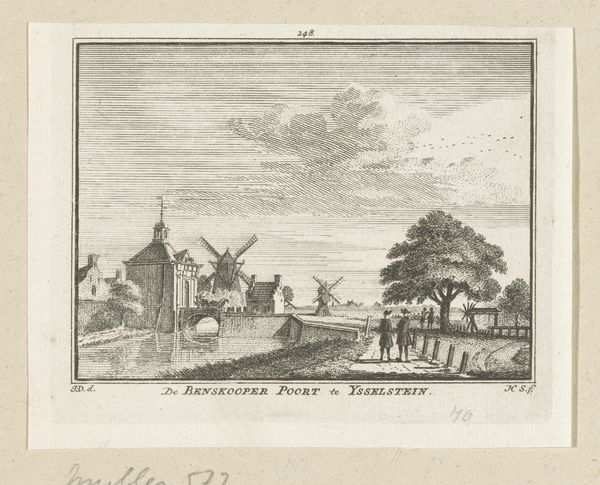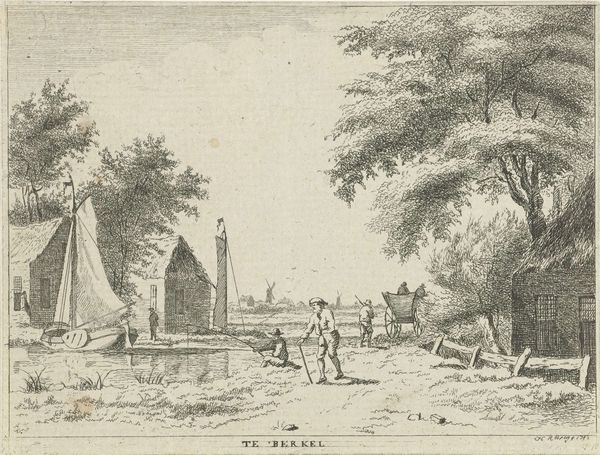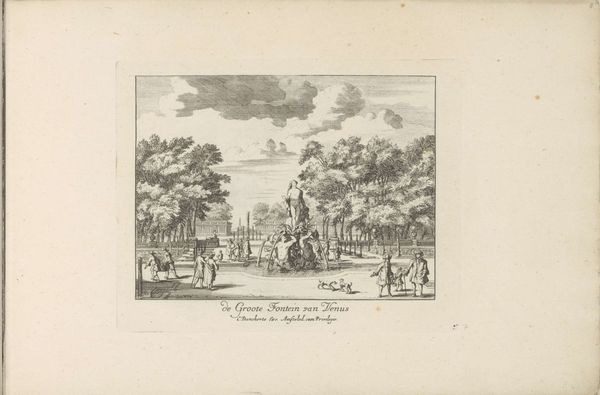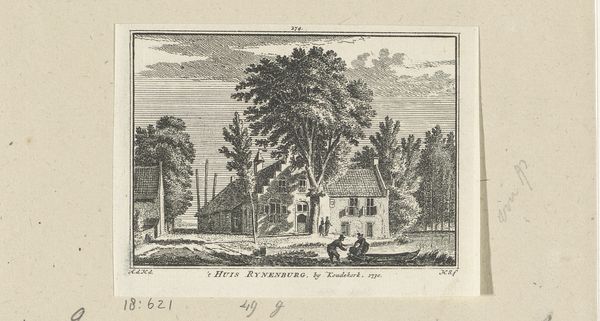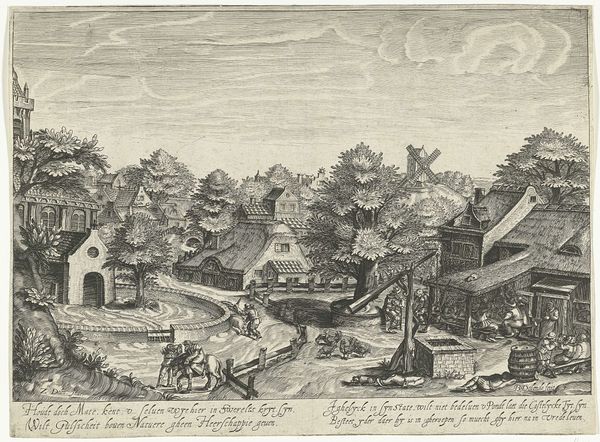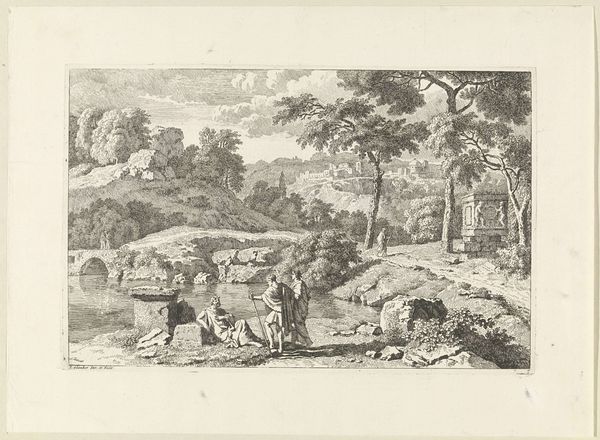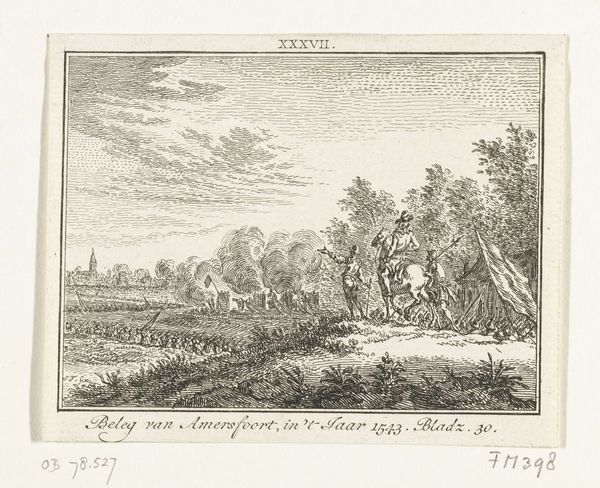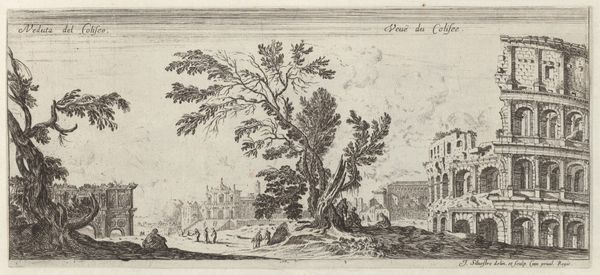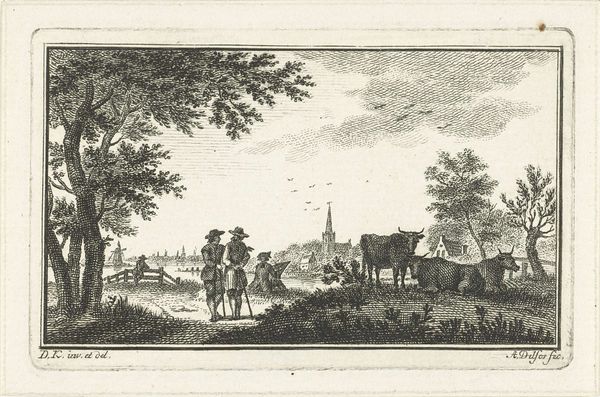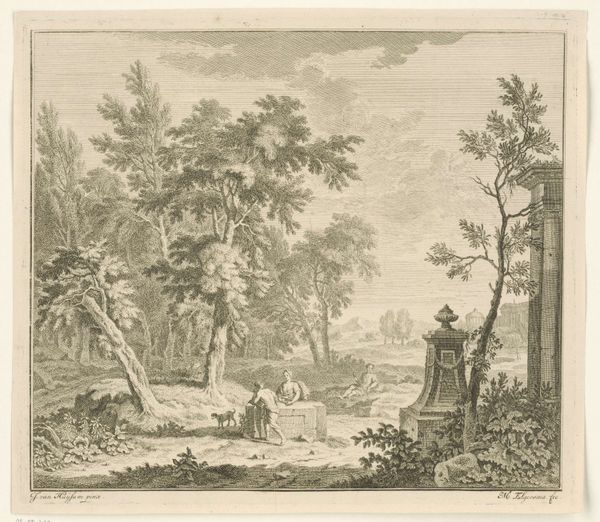
Dimensions: height 80 mm, width 104 mm
Copyright: Rijks Museum: Open Domain
Editor: We’re looking at Hendrik Spilman’s “Gezicht op Alphen aan den Rijn, 1749,” an engraving that depicts a Dutch cityscape. I'm immediately struck by how serene the image feels, almost like a perfectly manicured stage set. How do you read this scene? Curator: It’s easy to see that serenity, but I think it’s important to unpack the context a bit. Cityscapes like this weren't just innocent portrayals of everyday life. During this era, what purpose do you think these commissioned views served, especially considering the rising power and economic interests of the Dutch Republic? Editor: Hmm, beyond just documentation, I imagine they were used to promote a certain image, a vision of prosperity and order? Curator: Precisely. Consider the figures strolling so casually: their presence naturalizes and legitimizes a very specific socio-economic structure. Notice, for example, the architectural styles on display - reflecting class divisions and hierarchies of power embedded within the town's layout. And the placement of the church? Editor: I see what you mean! It’s not just about the picturesque. By focusing on those aspects, who is excluded, or misrepresented in that vision of "prosperity and order"? What are Spilman’s prints obscuring? Curator: Exactly. Perhaps he omits realities about class struggles or challenges to the power structures. Even elements like the landscaping—think about who had access to those manicured spaces and who maintained them, especially in the context of a colonial power reaping resources from afar? Editor: It definitely gives me a lot to consider. Now I can appreciate the engraving beyond its visual appeal. Thanks. Curator: Indeed, the role of art then was tightly interwoven within prevailing social currents. Thanks for sharing, too!
Comments
No comments
Be the first to comment and join the conversation on the ultimate creative platform.
